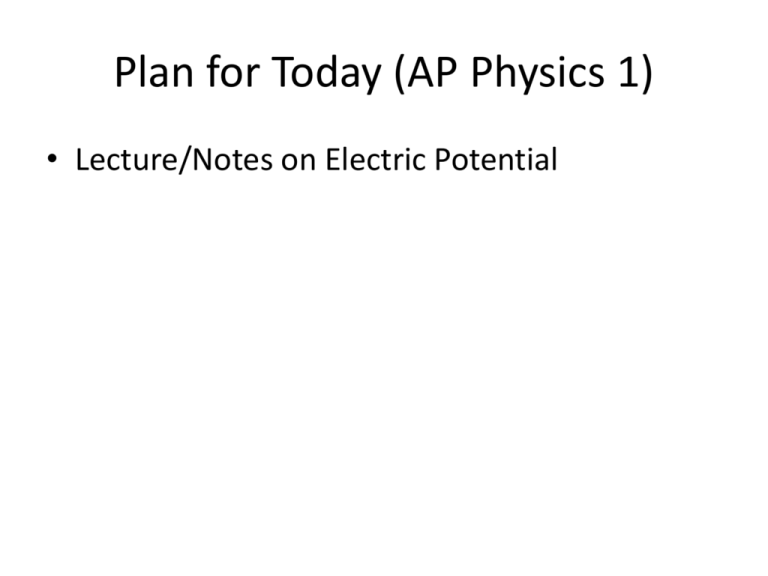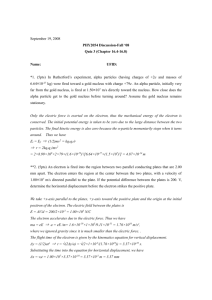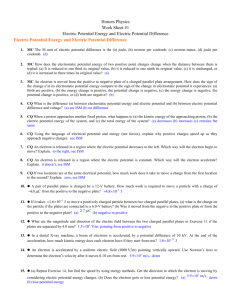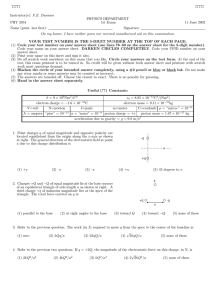Plan for Today (AP Physics 1)
advertisement

Plan for Today (AP Physics 1) • Lecture/Notes on Electric Potential Introduction to Potential Difference • Break into small groups and answer the questions on potential difference Intro to Potential Difference – Big Ideas • • • • • Force is constant – F = Eq Work function of F * x Change in potential energy is positive PE = F * d Change in PE = -qEd – Negative because q negative, d positve (in direction of E) Intro to Potential Difference – Big Ideas • So electron going with field • Increases PE – need to push in that direction • Proton going with E is negative (wants to go in that direction) – Like gravity Intro to Potential Difference - Cont • Force decreases as you go out (1/R2) • Work reduces as you go out since force decreases – Non-linear • PE = k q1q2/r – Like gravity • Difference between uniform and point charge electric fields New Term • • • • Potential difference Energy stored in an electron V = PE/q Units: J/C = Volts Why do we use this term? • Potential difference – potential to cause change • If I hold a bowling ball over someone, if I drop it, it will cause some problems • If I hold a tennis ball, if I drop it, it’s not a big deal • But if I drop 1 million tennis balls, student not so good Vandergraph and Wall socket • Same analogy • Vandergraph is 1500 V – hurts • Wall socket 110 V – could kill • What’s the difference? – The number of electrons giving energy Example • 3 V battery sends one Coulomb of charge to fan in one second • How much energy is given to the fan? • V = PE/q • PE = v * q = 3 * 1 = 3 J • If we use a 6V battery with 1 C of charge, what is the change in potential energy? • PE = 6 J in 1 second • What happens to the fan (with 6 V battery)? • Would spin faster • Is this your experience? Charges in a Uniform Electric Field • First, how can I get a uniform electric field? – Use two parallel plates – Attach to battery – Uniform within the plates – Starts to bend around the edge Example • If point A has E = 300 N/C, what is it at B, C, and D? • Answer: same because the electric field is uniform Example • Work done = - Work required to move electron from left plate to right plate? • Work = F * x = (Eq) *d • Work = -PE = qEd (ends up positive) – q is negative – electron – E is negative – against electric field – d is negative – against electric field • For a proton – W = -qEd • Charge positive • Same direction so work is negative • To think about this, compare to gravity – If charge is going the way it wants to, like a ball dropping to earth – Work negative Example • An electron is placed between 2 parallel plates 3 cm apart and attached to a 10 V battery. • If the electron starts at the negative plate, what is the velocity at the positive plate? Example • An electron is placed between 2 parallel plates 3 cm apart and attached to a 10 V battery. • If the electron starts at the negative plate, what is the velocity at the positive plate?







